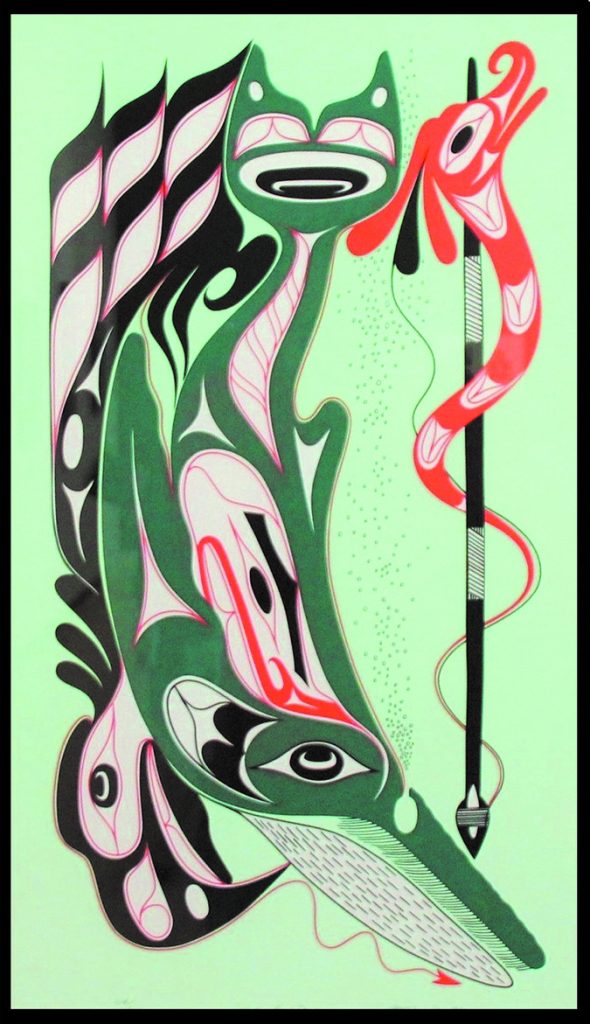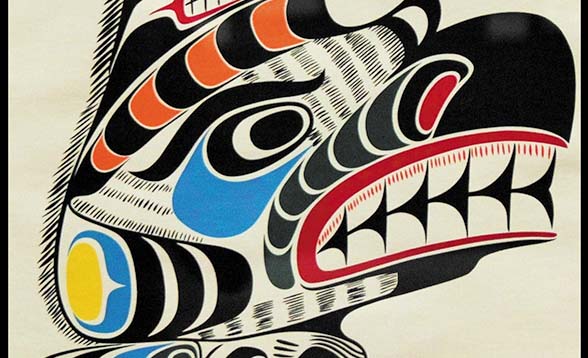
By Micheal Rios; Collection curated by staff of the Tacoma Art Museum
Since time immemorial, Native artists have expressed the cyclical nature of their culture and unique relationship to the world around them via a vast assortment of mediums available at any given time. This connection continues to evolve in the breathtaking artwork put forth by the current generation of Native creatives. From woodcarving and basketry to jewelry making and painting, an essence of the ancestors’ resiliency is felt in new waves of indigenous artistry proudly pushing their culture forward.
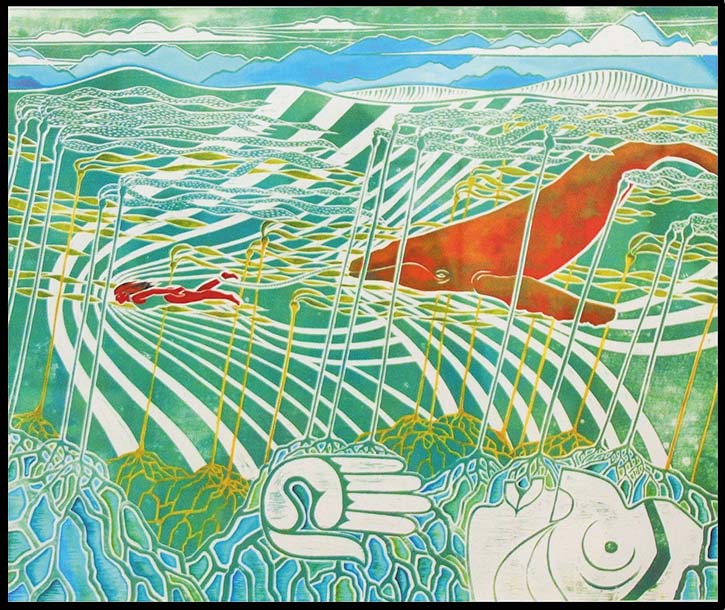
“When our people were whaling they prepared their whole lives spiritually to be worthy of a gift as generous as a whale. Everyone in the community had to work in unity to ensure the hunt was successful and done safely. Each whale was such a bountiful offering of food for the community and each part of the whale was utilized and celebrated. As a Native woman, there are many large gifts I am hoping to bring home to my community. Pook-mis, the drowned whaler, lies at the bottom of the sea floor and offers a warning that things can go horribly wrong if you are not properly prepared to receive life’s great offerings.”
Some artists carve or weave following traditions dating back generations, using the same methods and materials their ancestors used. Others have adapted modern day technology to push the bounds of painting and printmaking to explore culture shifting concepts. Such is the case with today’s formline landscape.
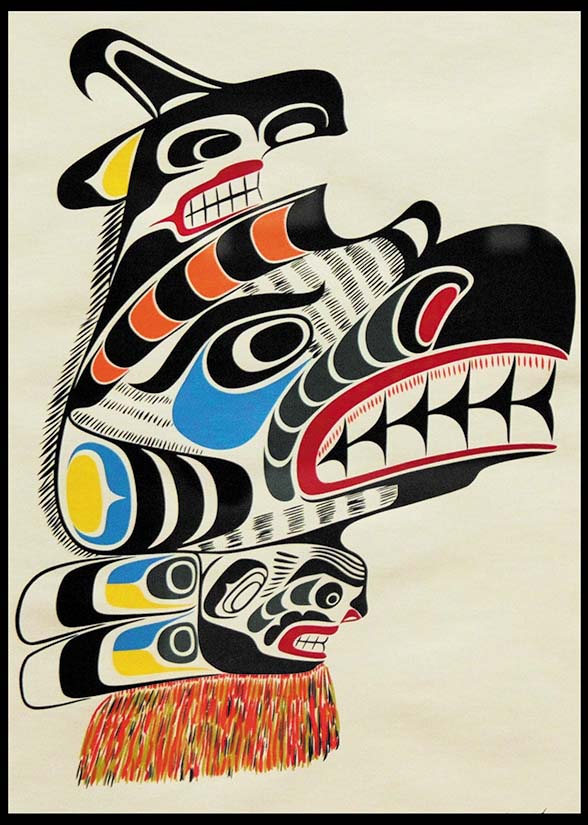
Often, when people think of Native art of the Northwest Coast, they think of formline. An artistic style thought to originate from the first peoples of northern British Columbia and Alaska, formline is characterized by free-flowing thick and thin lines often used in combinations of U-shapes, S-shapes and flattened ovals called ovoids. Most commonly rendered in bold black and red colors, these designs often depict animals and cultural spirits on story poles, hand carved paddles and masks, and most recently t-shirts and fine art prints.
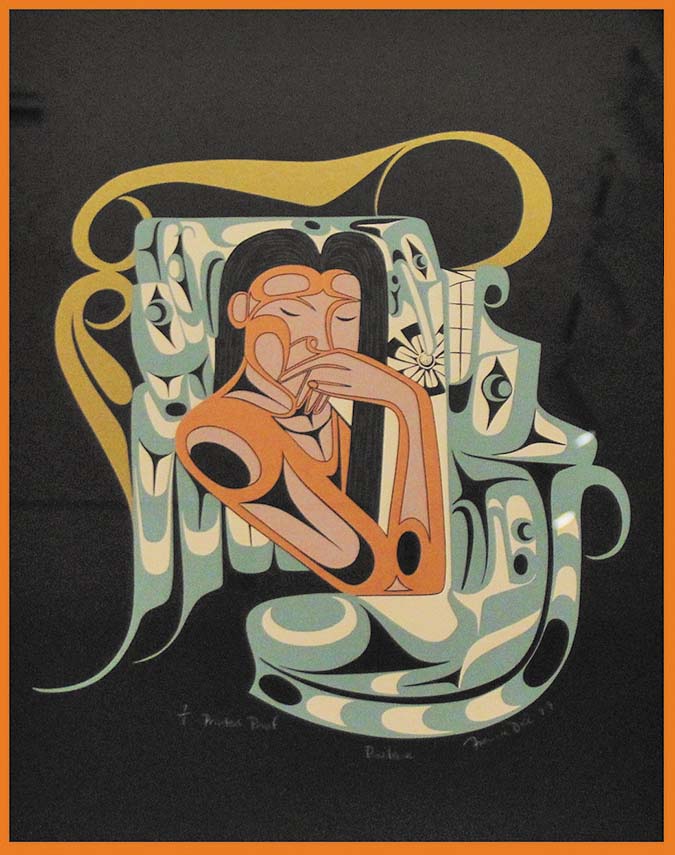
Artwork showcasing the distinct Coast Salish formline style became popular during the Alaska gold rush in the 1890s and the Alaska-Yukon-Pacific exhibit in 1909. The demand for formline continued as the prime choice for public exhibitions and private collections at the same time the Pacific Northwest region saw a dramatic boom in development and residency. As the greater Seattle area continued to develop into a tourism hotbed, the formline style eclipsed all other styles indigenous to the region.
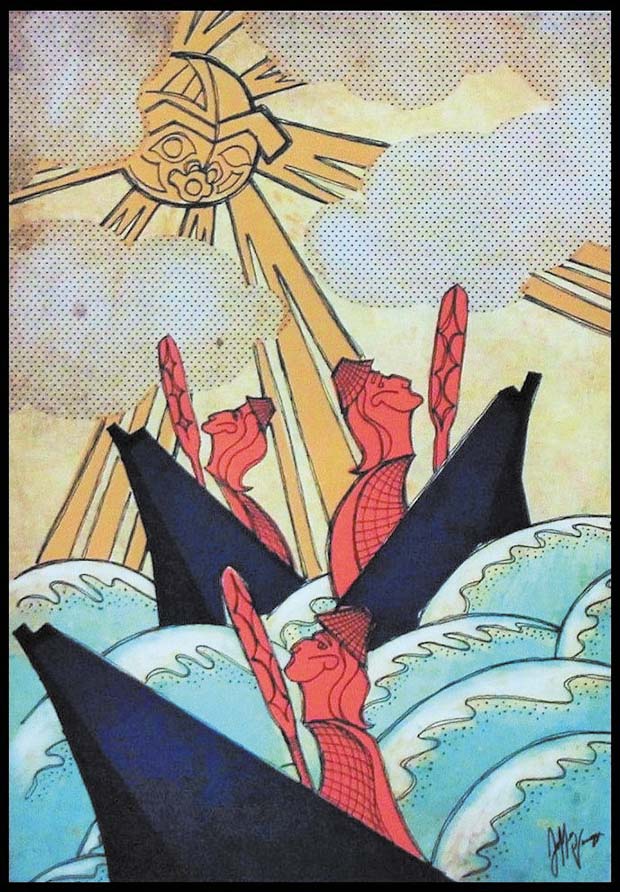
“For thousands of years Native and Non-Native storytellers have used art as a means to share the tales of their people. For me I am carrying on a tradition that started with my ancestors by simply using the means of today and all it’s modern conveniences to share the tales that I love. Art evolves, tools get better, but the essence of what I do is the same as those who did it on the canvases nature provided for them to tell the stories of gods and heroes long, long ago.”
Since the explosion of formline onto the mainstream art scene, countless culturally inclined Native peoples from the Northwest Coast have developed their passion for creativity in an era known as Salish Modern. Tuning their skilled artisan abilities to fulfill the demand for popular formline, the latest wave of Coast Salish artists have infused the art world with innovative prints combining storytelling, powerful cultural reflections, and vibrant Native flare. Such are the prints we offer our readers now.
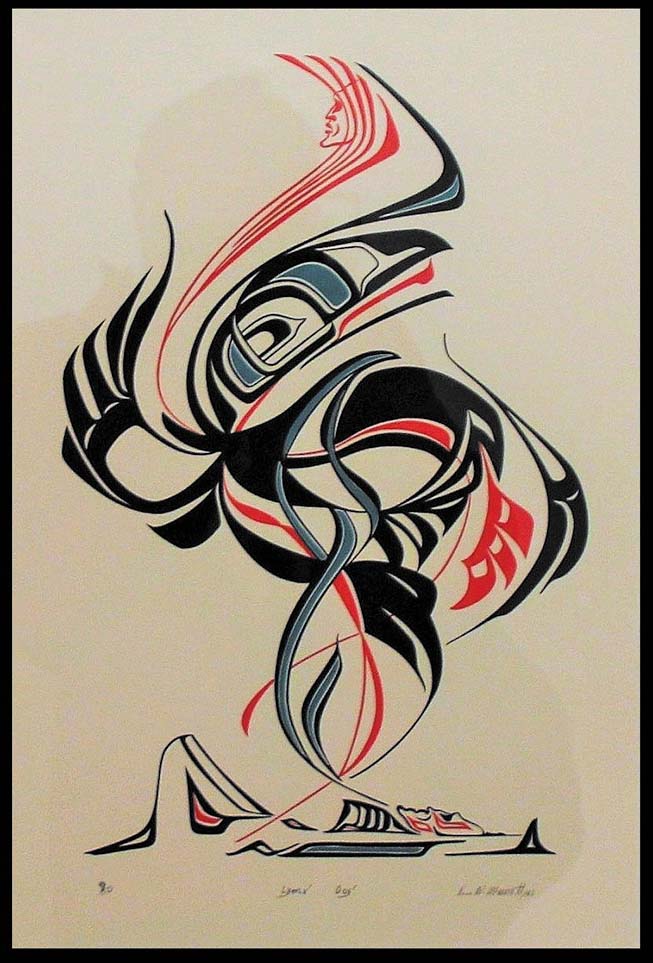
Dubbed ‘Salish imPRINTS’, this collection is created by artists who call the Salish Sea home and is intended to inspire the inner artist in everyone, while enhancing relevant conversations about a shared past, present and future.
